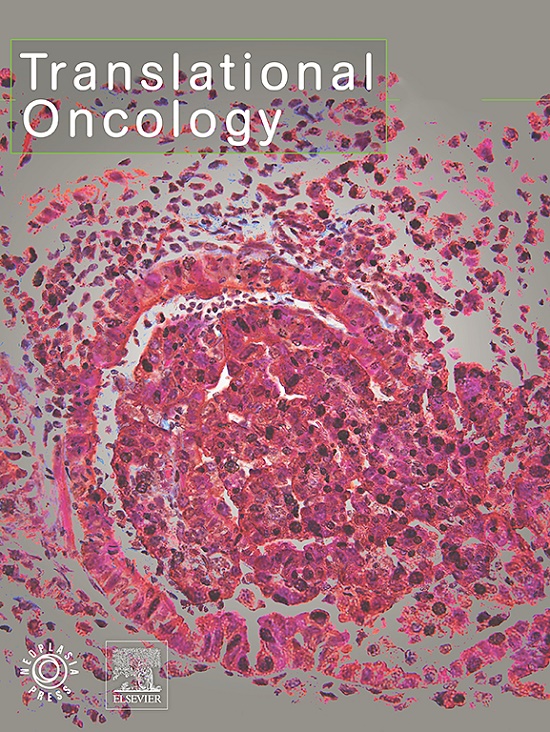解码乳腺癌的突变特征:多队列研究的启示
IF 5
2区 医学
Q2 Medicine
引用次数: 0
摘要
目的目前,激素类乳腺癌(BC)的诊断和治疗决策是以基因组突变测定为指导的,基因组突变测定结合成突变特征,可让人们深入了解患者的基因组情况。这项工作旨在将从 CICLADES 研究收集的组织样本中提取的基因组数据和特征与现有队列进行比较。材料与方法提取 CICLADES 队列中患者的 DNA 并进行测序,然后对生成的文件进行自定义过滤。基因组数据来自 cBioPortal.com 上的 6 个 BC 队列。总共分析了 2303 个样本。提取的突变特征与癌症中的体细胞突变目录(COSMIC)中的已知特征相匹配。结果PIK3CA和TP53是所有组群中突变率较高的两个基因。CICLADES组和CBSM组的TMB相似,但MSKCC组的TMB明显高于CICLADES组和CBSM组。研究人员提取了九个特征,其中包括重复出现的单碱基置换(SBS)特征,如SBS1、SBS2和SBS5。APOBEC特异性特征的出现与出现APOBEC富集的队列一致。在每个分析队列中,富集样本的平均突变数都明显高于其他样本。对 CICLADES 队列组织样本的基因组分析带来了新的相关数据,可与更大队列中发现的结果相媲美。本文章由计算机程序翻译,如有差异,请以英文原文为准。
Decoding mutational signatures in breast cancer: Insights from a multi-cohort study
Purpose
Diagnosis and treatment decisions of hormonal breast cancers (BC) are now guided by genomic mutations determination, combined into mutational signatures, and provide insight into the patients’ genomic landscape. This work aims to compare genomic data and signatures extracted from tissue samples collected in the CICLADES study to existing cohorts. Ultimately, the goal is to prove the accuracy of smaller cohorts and provide new relevant data.
Materials and methods
DNA from patients of the CICLADES cohort was extracted, sequenced, and custom filtering was applied to the resulting files. Genomic data was pulled from 6 BC cohorts available on cBioPortal.com. In total, 2303 samples were analyzed. Mutational signatures were extracted and matched to known signatures of the Catalogue of Somatic Mutations in Cancer (COSMIC). Tumor Mutation Burden (TMB) and hypermutation were estimated and compared between samples.
Results
PIK3CA and TP53 represented the two genes highly mutated across all cohorts. TMB was similar between the CICLADES and CBSM groups, however the MSKCC population showed a significantly higher TMB than both. Nine signatures were extracted, with recurring Single Base Substitutions (SBS) signatures like SBS1, SBS2 and SBS5. The presence of APOBEC-specific signatures was concordant with cohorts presenting APOBEC enrichment. The mean number of mutations was significantly higher in enriched samples for each analyzed cohort.
Conclusion
The use of comprehensive genomic profiling provided accurate evaluation of the TMB and extraction of signatures consistent with published literature. The genomic analysis of the tissue samples of the CICLADES cohort brings new and relevant data, comparable to results found in bigger cohorts.
求助全文
通过发布文献求助,成功后即可免费获取论文全文。
去求助
来源期刊

Translational Oncology
ONCOLOGY-
CiteScore
8.40
自引率
2.00%
发文量
314
审稿时长
54 days
期刊介绍:
Translational Oncology publishes the results of novel research investigations which bridge the laboratory and clinical settings including risk assessment, cellular and molecular characterization, prevention, detection, diagnosis and treatment of human cancers with the overall goal of improving the clinical care of oncology patients. Translational Oncology will publish laboratory studies of novel therapeutic interventions as well as clinical trials which evaluate new treatment paradigms for cancer. Peer reviewed manuscript types include Original Reports, Reviews and Editorials.
 求助内容:
求助内容: 应助结果提醒方式:
应助结果提醒方式:


